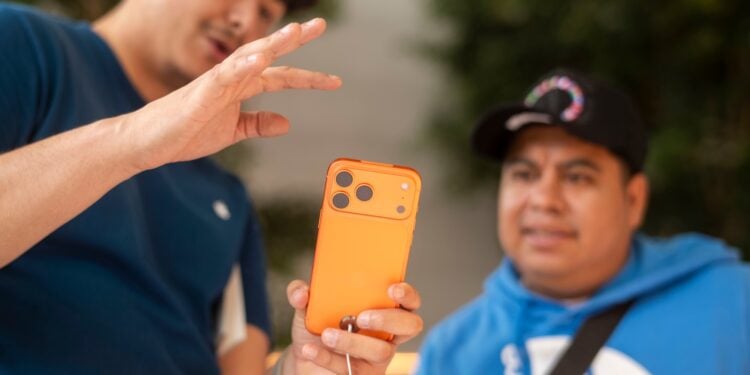Apple is apparently testing a new feature that could improve collaboration between the iPhone and third-party smartwatches. Hints of a possible new interface for notifications and accessory integration have been discovered in the beta version of iOS 26.1. Nothing has been officially confirmed, but the code changes are clear. It could be an indication of a strategic shift in direction, triggered by regulatory pressure from the EU and the US.
For a long time, the iPhone was heavily geared toward the Apple Watch. While other smartwatches could be paired, they had little access to system functions. The display and management of notifications was particularly limited. Users of non-Apple smartwatches often only received basic information—without any ability to interact. Full support remained reserved for the Apple Watch. This fit well with Apple's closed-loop strategy, but repeatedly drew criticism.
Notification Forwarding: Hints in the iOS code
The iOS 26.1 code now contains the first reference to a new feature called "Notification Forwarding." One line of text states:
Choose which apps can send notifications to your accessory.
Another line explains:
Notifications can be forwarded to one accessory at a time. Notifications will not appear on Apple Watch if notification forwarding is enabled.
This wording suggests that notifications can be specifically forwarded to another device—such as a third-party smartwatch. At the same time, the Apple Watch will be deactivated in this case. This suggests that Apple is rethinking its accessory prioritization.
New framework for accessory pairing
In addition to notification forwarding, a new system module called "AccessoryExtension" was also discovered. This could be a framework that facilitates the pairing of accessories – presumably including smartwatches. Technically, this would be a prerequisite for better integrating third-party devices into the iPhone ecosystem. It is still unclear whether these features are being actively tested or whether they will be implemented at a later date.
Pressure from the EU and the US Department of Justice
The changes come as no surprise. In the European Union, the Digital Markets Act (DMA) obliges companies like Apple to open their systems to competing providers. Access to notifications, cellular functions, or other system areas should no longer be exclusive to Apple products. The new notices could therefore be part of an adjustment to the legal requirements. Apple is also under scrutiny in the USA. In an ongoing antitrust case, the Department of Justice (DoJ) accuses the company, among other things, of deliberately discriminating against third-party smartwatches. The main criticism is that competing devices are denied access to cellular connections and cannot respond to incoming notifications. According to the DoJ, Apple has used the market power of its devices to exclude other providers.
- As a reminder, the Department of Justice also accused Apple of hindering cloud gaming on the iPhone in the past. Cloud streaming has been officially permitted since iOS 17.4. The late introduction of RCS was also criticized – RCS is now supported with iOS 18. Access to the NFC chip was restricted for a long time, but was opened up to third-party developers with iOS 18.1.
Exclusively for Europe – or global?
It's possible that Notification Forwarding will be made available exclusively in the EU to comply with the Digital Markets Act. However, it's also conceivable that Apple will introduce the changes globally—either voluntarily or for strategic reasons to anticipate international pressure. Apple has not yet officially commented on the changes.
iPhone enters new phase of device compatibility
If the hints from the iOS code are confirmed, the iPhone could soon become significantly more open to third-party smartwatches. The ability to forward notifications to specific devices, in particular, would be a significant step toward greater compatibility. Whether further features will follow remains to be seen. This development demonstrates that the iPhone is adapting to new technical and regulatory frameworks – with the potential for more choice in connected devices. (Image: Shutterstock / Ringo Chiu)
- iPhone 17 Pro: How scratch-resistant is the new aluminum case?
- iPhone Air and iPhone 17 Pro: Bend & Drop Test Comparison
- New content for Apple Arcade: Highlights in October 2025
- Apple is working on new security features for iOS 26
- Apple in focus: EU investigates App Store over fraudulent apps
- Apple invests in redwood forest restoration
- Apple celebrates reopening of Ginza Store in Tokyo
- FiDA Regulation: Germany wants to exclude Apple & Co.
- Apple expands Image Playground – what the beta version shows
- Apple develops MCP integration for AI agents in iOS & macOS
- iOS 26.1: Language update for Apple Intelligence and AirPods
- Wedbush raises price target: iPhone 17 gives Apple investors hope
- Apple announces new immersive content for Apple Vision Pro
- iPhone 17: Users report Wi-Fi outages





